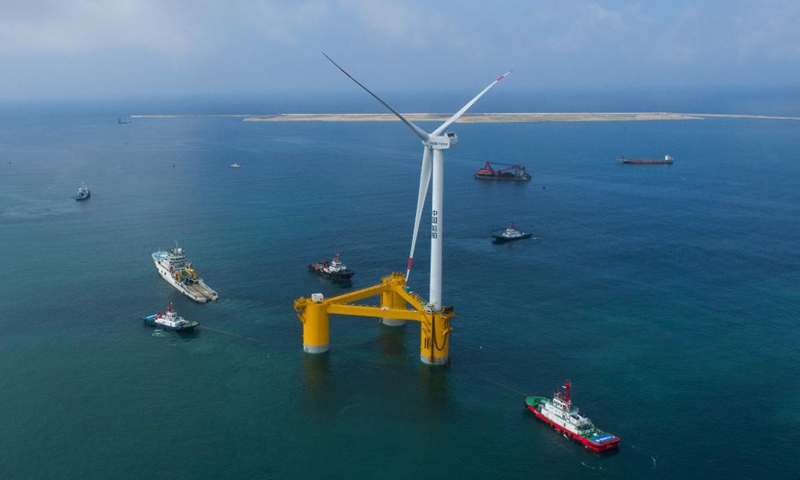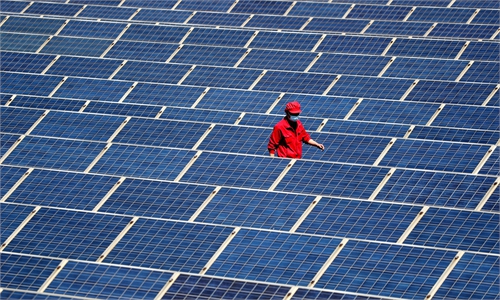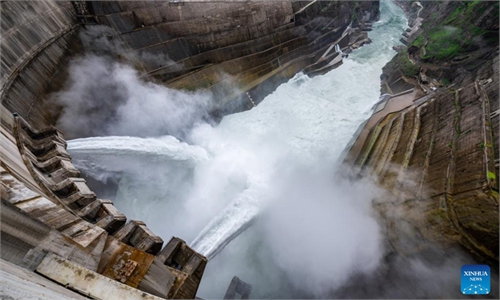China rolls off home-developed 13.6MW offshore wind turbine; No.1 globally in propeller diameter

Aerial photo taken on May 27, 2022 shows a deep-sea floating wind power equipment "Fuyao" in Maoming, south China's Guangdong Province.Photo:Xinhua
China's home-developed 13.6-megawatt offshore wind turbine has rolled off the production line in East China's Fujian Province recently, marking the country's breakthrough in the research and manufacturing of the high-end equipment in the sector.
With propeller diameter of 252 meters, the wind turbine covers a swept area of 50,000 square meters, which is equivalent to seven standard soccer fields, the People's Daily reported on Saturday.
The single unit could produce clean energy of 63.5 million kilowatt-hours annually, meeting the annual electricity needs of more than 30,000 three-people households. It will greatly save energy and reduce carbon emission. It's estimated it'll reduce the consumption of coal by 19,000 tons and reduce carbon dioxide by 48,000 tons a year, according to the report.
The wind turbine has the largest single-unit capacity in the Asia-Pacific region and the largest propeller diameter in the world. The application of the offshore wind turbine would drive up the industrial upgrading of the country's wind power sector and boost the transformation of the country's energy structure, according to People's Daily.
In the past 10 years since the 18th National Congress of the Communist Party of China in 2012, China has stepped up efforts to promote the green and low-carbon development of the country's energy sector, with the production of clean energy continuously rising.
The country's installed capacities of hydropower, wind power and solar power generation all exceeded 300 million kilowatts last year, according to data released by the National Bureau of Statistics.
The consumption share of clean energy also witnessed continuous growth. In 2021, coal accounted for 56 percent of the country's total energy consumption, down from 68.5 percent in 2012. In contrast, the share of natural gas rose from 4.8 percent to 8.9 percent during the same period, it said.


